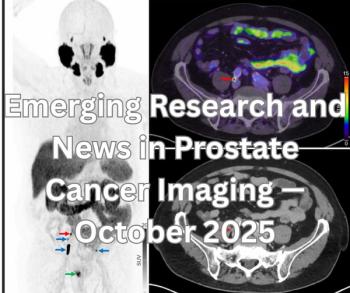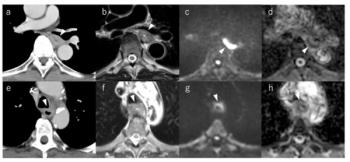
Panel orders centralized pretrial proceedings in NSF cases
The discovery process for more than 60 federal lawsuits alleging a connection between cases of nephrogenic systemic fibrosis and gadolinium-based MR contrast agents will be consolidated at a single district court in Ohio, according to a U.S. judicial panel. Centralization will accelerate the discovery process and give plaintiffs access to a wider pool of pretrial information.
The discovery process for more than 60 federal lawsuits alleging a connection between cases of nephrogenic systemic fibrosis and gadolinium-based MR contrast agents will be consolidated at a single district court in Ohio, according to a U.S. judicial panel. Centralization will accelerate the discovery process and give plaintiffs access to a wider pool of pretrial information.
As of late February, 66 federal cases had been filed on behalf of patients with renal failure who allege that gadolinium-based contrast agents triggered NSF, a life-threatening skin condition. In early March, a California couple filed a suit in the U.S. District Court for the Northern District of California against several contrast agent developers.
The U.S. judicial panel on multidistrict litigation issued the transfer order
In the written order, the panel noted that defendants, including GE Healthcare (Omniscan) and Bayer Healthcare Pharmaceuticals (Magnevist), objected to the centralization of the discovery process. The defendants argued that because each contrast agent has a unique formulation, global discovery would impinge upon the due process rights of the individual companies, according to the transfer order.
The defendants also said that the majority of cases were against GE Healthcare and that not enough lawsuits were filed against the other manufacturers - such as Bracco (ProHance and MultiHance) and Covidien (OptiMark) - to merit the consolidation of discovery.
But the panel was not persuaded by these arguments. Instead, they wrote that placing all the cases before a single judge would expedite the discovery process and allow the plaintiffs to share relevant information.
The order is a victory for all parties involved in the cases, said attorney John Dalimonte of Karon & Dalimonte in Boston.
"The purpose of having a consolidated action is to streamline litigation, avoid duplicative discovery, prevent inconsistent pretrial rulings, and conserve the resources of the parties, their counsels, and the judiciary system." said Dalimonte in an interview with Diagnostic Imaging.
Dalimonte is representing a number of plaintiffs in the NSF lawsuits.
"It lessens the burden on the court system and even on the defendants. It coordinates all the discovery process and allows the judge sitting in Ohio to manage the litigation," he said. "It allows for quick adjudication so that plaintiffs get their day in court sooner."
The cases will be sent back to the district courts where they were originally filed after the discovery process is completed, Dalimonte said.
One of the main issues that the discovery process will tackle is determining when the manufacturers knew about the potential link between gadolinium-based agents and NSF and whether they warned doctors about that risk in a reasonable amount of time.
"What makes these cases unique is that NSF is a manmade disease. The only known cause is the exposure to gadolinium, and the only known way that gadolinium can get into the body is through an (IV)," Dalimonte said. "The failure to warn aspect comes into it because companies knew that they were having problems. They should have issued a warning a lot sooner."
NSF cases were first reported in 1997. In May 2007, the FDA requested that gadolinium-based contrast agent makers include a "black box" warning labels on their products.
For now, contrast agent manufacturers are the primary targets in NSF lawsuits, but physicians need to be on their guard, said medicolegal expert Dr. Leonard Berlin, radiology chair at Rush North Shore Medical Center in Skokie, IL.
"It's just a matter of time before they will include as defendants the radiologists and radiology facilities," he said.
The majority of the cases were most likely filed before the American College of Radiology updated its
"What did the defendants know and when did they know it? Once they knew about it, did they immediately inform the radiologists? Win or lose, the plaintiffs' lawyers are going to come back and say, 'Let's go after the radiologists. Were they aware of the guidelines and did they follow the guidelines?'," Berlin said.
Dalimonte estimated that the discovery process could take a year or longer. A hearing in Polster's court is set for early April to hash out the logistics of the global discovery process, he said.
In the short term, radiologists who are even peripherally involved in NSF cases should be prepared to be called as witnesses, Berlin said. He advised radiologists to be extra vigilant and follow the ACR's recommended guidelines.
"The attention of the entire radiology community should be on these cases," Berlin said. "The outcome of these cases will have a marked effect on the practice of radiology. The more publicity these cases get, the more cases there are going to be."
For more information from the Diagnostic Imaging archives:
Newsletter
Stay at the forefront of radiology with the Diagnostic Imaging newsletter, delivering the latest news, clinical insights, and imaging advancements for today’s radiologists.





























